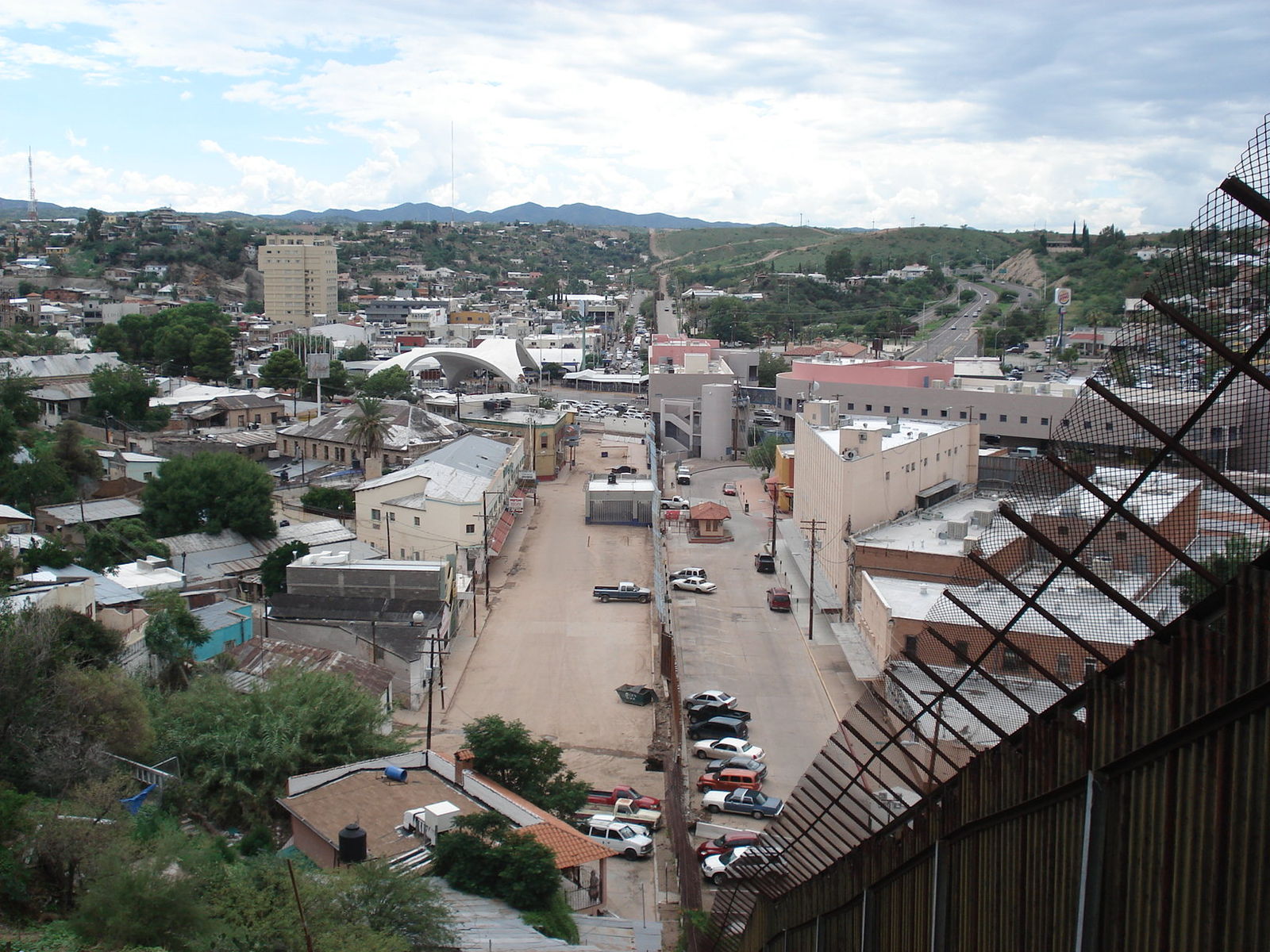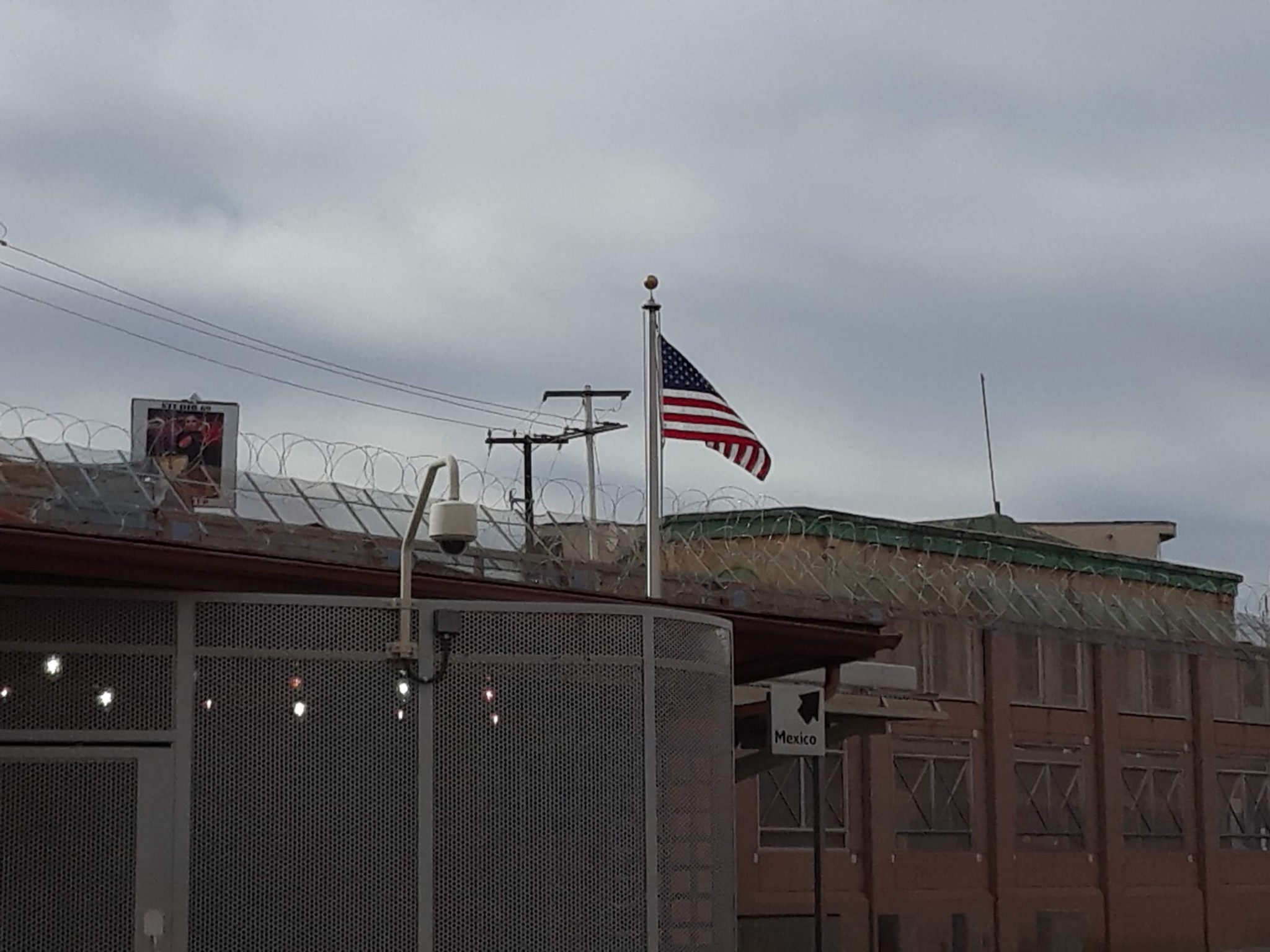

Ambos Nogales in 2008. Nogales, Sonora is on the left, and Nogales, Arizona is on the right. (Photo by Elnogalense)
NOGALES, ARIZONA — I’ve been a resident of Nogales/Santa Cruz County my entire life. I’ve seen the ups and the downs, the good times and the bad. My dad, may he rest in peace, worked for U.S. Customs and Border Protection for almost four decades, all the way back to when they were two separate agencies and Customs was part of the Treasury Department. Homeland Security didn’t even exist back then.
Growing up on the border in a community like Nogales offers a rare insight into U.S. relations with Latin America. Growing up in the home of a U.S. Customs officer took that insight even further.
Being on the border, we are often the victims (or beneficiaries) of policy we have no part in making. The North American Free Trade Agreement (NAFTA, now called the USCMA) is a perfect example of this. As a city that thrives on cross-border commerce, NAFTA brought new opportunity to Nogales, and allowed the produce and twin plant (maquila) industries to grow and thrive in the region, the benefits of which extend across the entire United States.
But there is other national policy that can and has affected Nogales in negative ways.
About 20 years ago, there was little more than a fence serving as the dividing line between Nogales Arizona, and its sister city Nogales, Sonora, collectively known as Ambos Nogales (both Nogales). During the George W. Bush Administration, this was upgraded to a slatted fence (a “Wall” if you will), and security at the pedestrian gates of the Dennis DeConcini port of entry was upgraded.
Nogales is unique in that it is really one city divided by a fence rather than a geographical barrier. The lives of the people of Nogales, or Nogalenses, exist on both sides of that fence. Thousands cross back and forth across the border daily for any number of reasons: work, shopping, and visiting family. There are even dozens of dentist offices, and pharmacies that thrive on the Mexico side due to U.S. citizens who come from all over the country because medicine and dental work is so much cheaper there. Most of those dentists and pharmacists themselves are U.S. citizens.
If you were to ask my dad while he was still alive, and if you ask many of the CBP agents who work in Nogales now, they will tell you that the biggest threat to the security and efficiency of the three Nogales ports of entry (Morley pedestrian gate, Dennis DiConcini, and Mariposa) is that they are consistently understaffed. 99.9999%( not a verified statistic. Don’t crucify me if it’s off by 2 or 3%) of cross-border traffic has nothing to do with cartels or terrorism. And the .0001% that are threats to national security don’t walk across the desert or jump over the fence.
Donald Trump, the man elected to the presidency by the Electoral College in November 2016, has demanded funding for his “Wall” since the Republican primaries that led to his official candidacy. He even went so far as to shut down the government hoping the Democratic Congress would give in to his demands.
I’m not disputing that border security shouldn’t be a priority. And we can dispute human rights versus national security for weeks without getting anywhere productive. But I will pose this question: Is the problem that we don’t have enough money invested in securing our borders, or that we’re not using the money we have efficiently enough? And taking it a step further, I ask the President and other advocates of a border wall this: How much say should the communities immediately affected by border policy have in the decision-making process?
Late last year, the U.S. military was deployed to communities all across the U.S.-Mexico border in response to caravans of thousands of Central American asylum seekers heading north to try and find better lives in the United States. In Nogales, those troops used their time and energy to reinforce, or “harden” the border by closing off two lanes of traffic, welding spikes to the U.S. side of the fence, and running two rows of concertina wire (razor wire) all across the length of it.


Razor wire installed by the U.S. military in Ambos Nogales (Photo by Joseph Paul Wright/Latino Rebels)
Nogalenses weren’t happy with the new addition to our fence. It looked bad. It has even been compared to the Berlin Wall prior to the fall of the Iron Curtain.
But what does the U.S. government do in response to the concerns and complaints of the people of Nogales, the actual U.S. citizens directly affected by this act? They go ahead and redeploy the military then run two additional and completely unnecessary rows of lethal concertina wire across the length of our border.as
Recently, Nogales mayor Arturo Garino condemned the decision to run more concertina wire across the fence, also saying that the Nogales City Council is considering challenging the Border Policy of the current administration as it has negatively impacted the binational community of Ambos Nogales.
As a journalist, author, advocate, and concerned citizen, I have watched firsthand how these policies have hurt our community. We have no say, and I’m sick of it. Communities like Ambos Nogales are constantly overlooked by lawmakers as though our proximity to Mexico renders our voices and opinions obsolete.
I, for one, say, “No more!” As a private citizen. I will do everything in my power to fight for the people of Nogales and the dozens of communities like ours across the US-Mexico border. Our opinions matter, and our voices will be heard. You can count on that.
***
Joseph Paul Wright is a freelancer journalist based in Nogales, Arizona. He tweets from @joewrightwrites.



A wonderfully written, powerful piece. Thank you Joseph Wright for so eloquently highlighting how hysteria about border “security” and political posturing on the part of our current administration has left border communities’ concerns in the dust.
Remember that repeated raw sewage flows into Nogales, AZ have been ignored by the feds, the same people who insist they are “protecting” the border. How can your water supply be constantly threatened and your “protectors” not do anything to address that very real danger? This administration cares nothing for border communities. It’s all an elaborate show to keep Trump’s base scared and supportive of him.
Very powerful and true to my opinion. Thank you for sharing.
6 rows of razor wire added all across the town! Destroying our self identity, dangerous for our children, and ruinous for business. https://www.nogalesinternational.com/news/despite-complaints-soldiers-add-more-wire-to-nogales-border-fence/article_d4397ff2-28b7-11e9-94ff-e36237f3a29f.html
I would agree that the razor wire is unattractive and is hurting our economy. I am a supporter in bringing back the economy in Ambos Nogales. I liked your piece but you failed to address that the problem is real. My Latino neighbors lock their homes 24/7 in fear of the “illegals”, to protect their women and children. This is wrong!, This is America, land of the free! I support our voice being heard and feel the manning of proper personnel is the solution, but let’s not forget why the wire is there.
Steven, “let’s not forget why the wire is here” what do you mean by that ? And where are your Latino neighbors who live in fear of illegals ? And for you to say the razor wire is “unattractive” ; not dangerous worse, calls you as a soft talking bigot.
Very well stated. When you mentioned a “city divided”, I immediately thought about Berlin. But this time we put up the wall and have reinforced it to the ridiculous. Every wall known to mankind has been breached. So is this one, regularly. We need sound security strategies of all types to effectively respond to crime, and we need reasonable, affordable immigration policies that respond humanely to those seeking to live and to work in the United States. Our Homeland Security agents here do a fine job even when hamstrung by political policies put into place by those who know little or nothing about the peoples and the economies they impact on either side of our city. I would add a third picture — one from today. I am embarrassed to think our nation has come to this — creating a Normandy Beach where no war that warrants such measures exists.
Do you even know what the Berlin Wall was separating?
Our Nogales now looks like a gated camp
We used to have 13,000 plus pedestrian visitors a day, plus thousands of autos. Sidewalks were crowded. Wonder what it is now. Downtown Nogales Az is abandoned, due to the visual vitriol. The whole razor wire thing says BP is scared of their own shadow. Why can’t BP do foot patrols instead of just sitting in their trucks? If they don’t have the courage to walk the walk they need a new profession. Its is scurrilous what they have done. I for one will do all that I can to undo the gistapo goulag like ambiance Trump policy has created here.